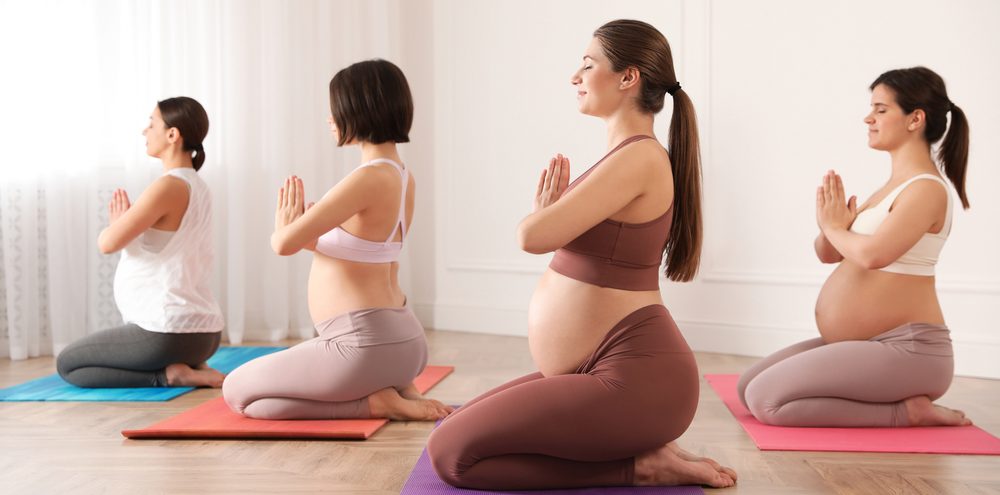DISCLAIMER: Always consult with a healthcare professional before starting any new routines, programs, or nutrition plans to ensure you receive the best medical advice and strategy for your specific individual needs.
For expecting moms with uncomplicated pregnancies, exercise is not only safe, healthy, and feasible but it’s highly encouraged. Participating in some form of pregnancy exercise decreases the risk of low birth weight, premature delivery, or miscarriage. On the contrary, physical inactivity while expecting puts you at risk of complications such as gestational diabetes, high blood pressure, and being overweight. Lack of physical activity also creates a risk for emergency C-sections, preterm delivery, and longer labor.
While exercising during pregnancy doesn’t mean signing up for that marathon or going all sporty, spending nine months on the sofa isn’t good for your health and your baby either. The key here is moderation and not being carried away by extremes. Regular light exercise is best as it builds strength, improves breathing control, prepares the body for labor, and speeds up postpartum recovery. True, there will be days when doing the dishes or taking the dog for a walk feels like a major accomplishment.
So, listen to your body and be receptive to what it needs. Exercise whenever you can, at your own pace, and choose an exercise that resonates with you. Activities such as yoga, aqua aerobics, Pilates, and breathing exercises are all excellent ways to ensure you’re fit and strong for labor and beyond.
Is It Possible to Combine Pregnancy and Exercise?
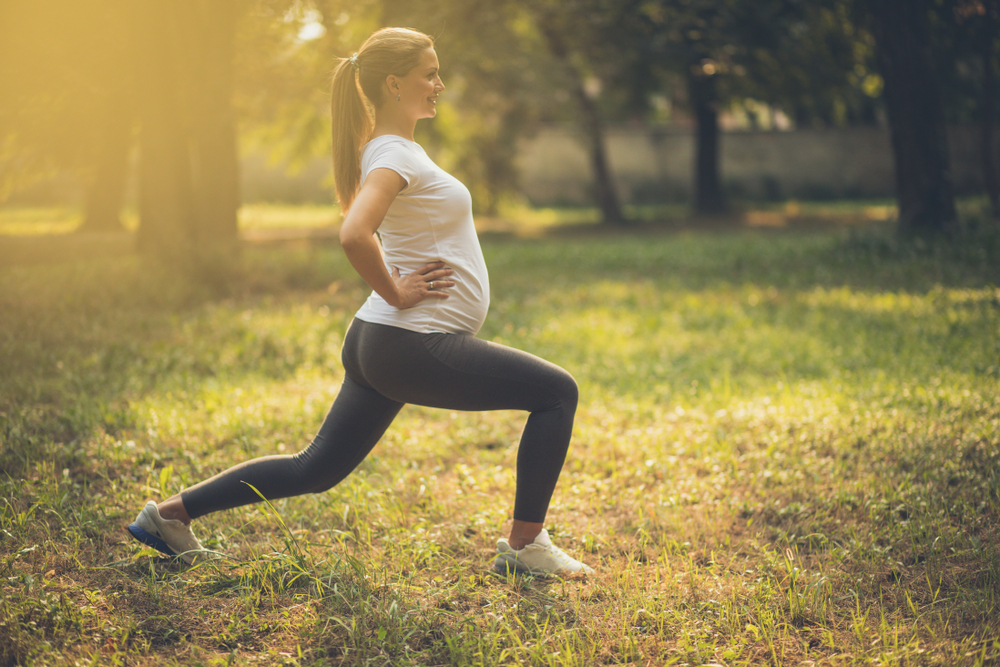 Pregnancy and exercise are fully compatible unless your doctor advises you not to. Avoid exercise if you have persistent bleeding, cervical insufficiency, low-lying placenta after 26 weeks, preeclampsia, ruptured membranes, anemia, or chronic heart or lung disease.
Pregnancy and exercise are fully compatible unless your doctor advises you not to. Avoid exercise if you have persistent bleeding, cervical insufficiency, low-lying placenta after 26 weeks, preeclampsia, ruptured membranes, anemia, or chronic heart or lung disease.
If all is going well and you don’t have any health issues that need to be addressed, exercise is not only safe but offers a myriad of benefits, including:
– Improved sleep
– Stress relief
– Weight control
– Improved blood circulation
– Reduced pelvic and lower back pain
– Increased energy
– Lower risk of injury
– Improved fitness, muscle tone, endurance, and stamina
– Enhanced immunity
– Fewer pregnancy complications
– Easier labor and delivery
What Workout Is Safe for Pregnant Women?
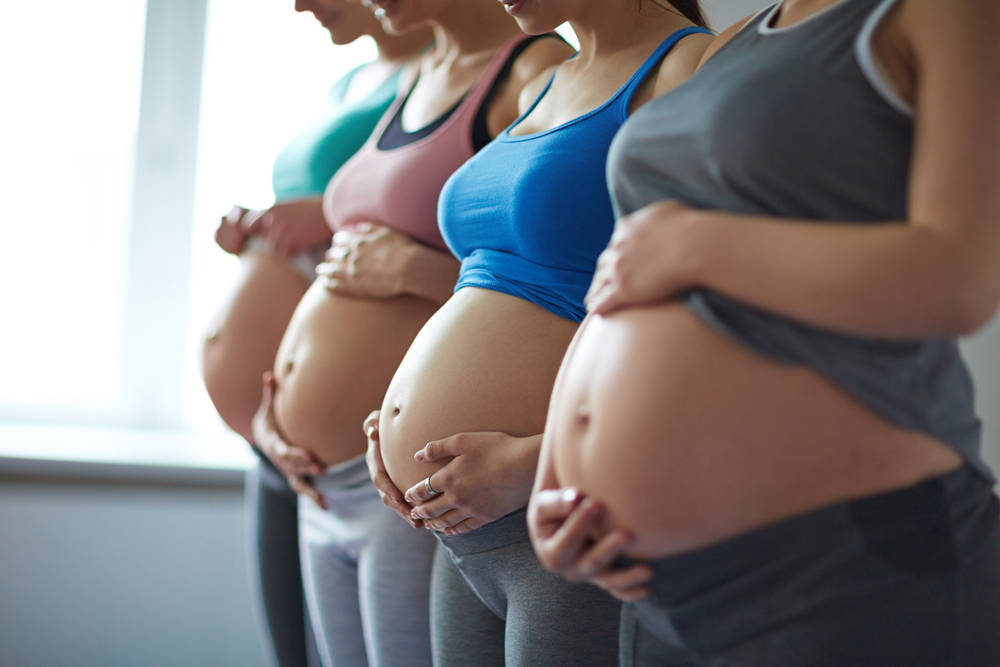 Some types of exercise are safe while pregnant, including Pilates, yoga, jogging, aqua aerobics, stationary cycling, and brisk walking. During the first trimester, it is generally safe to engage in more vigorous activities like moderate weightlifting, running, and squats. Exercises that are safe during the second trimester include slow jogging, brisk walking, aqua aerobics, and swimming. Low-impact exercises are best during the third trimester, including relaxation and breath exercises, yoga, Pilates, and aqua aerobics.
Some types of exercise are safe while pregnant, including Pilates, yoga, jogging, aqua aerobics, stationary cycling, and brisk walking. During the first trimester, it is generally safe to engage in more vigorous activities like moderate weightlifting, running, and squats. Exercises that are safe during the second trimester include slow jogging, brisk walking, aqua aerobics, and swimming. Low-impact exercises are best during the third trimester, including relaxation and breath exercises, yoga, Pilates, and aqua aerobics.
All activities and exercises with an increased risk of injury and trauma should be avoided during pregnancy. Examples include heavy lifting, basketball, soccer, hockey, gymnastics, skating, horse riding, and high-altitude training.
Pilates
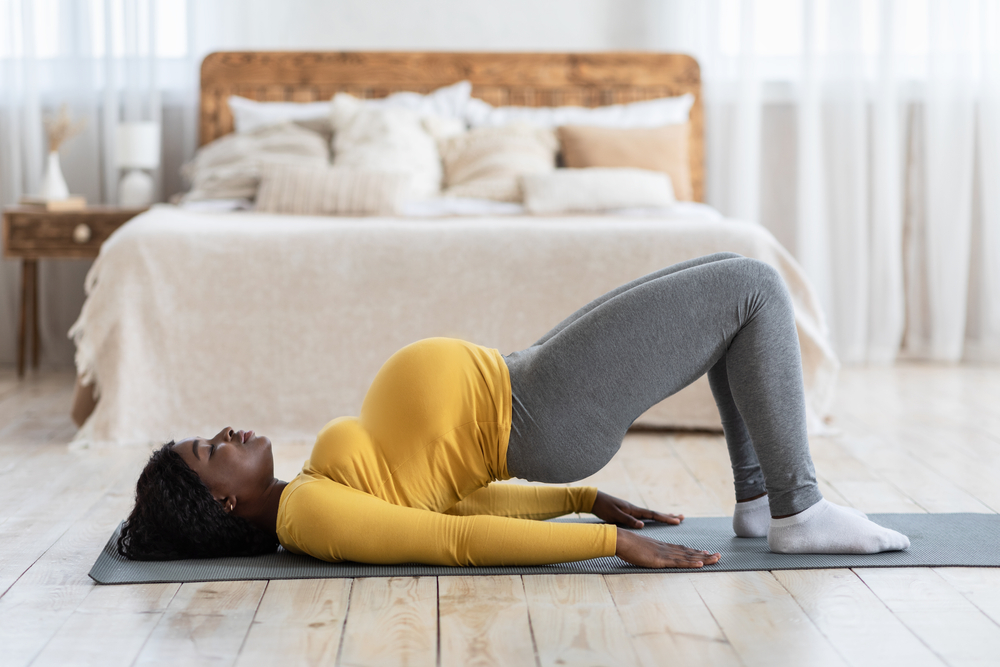 As Pilates carries minimal risk, it is considered safe during pregnancy, with multiple benefits for expectant mothers. Pregnancy workouts focus on strengthening and stretching the pelvic floor muscles to prepare you for labor and postpartum recovery.
As Pilates carries minimal risk, it is considered safe during pregnancy, with multiple benefits for expectant mothers. Pregnancy workouts focus on strengthening and stretching the pelvic floor muscles to prepare you for labor and postpartum recovery.
Indeed, Pilates has been shown to lower the incidence of birth interventions, including analgesia and episiotomy, and the number of obstructed labor and Cesarean deliveries.
The coordination of movement with breath in Pilates and the involved full, deep breathing is also beneficial in many ways. Deep breathing increases oxygen to your brain and activates the parasympathetic nervous system, thus producing a relaxing effect.
Aqua Aerobics
 Water walking and pool aerobics are good choices if you are a less confident swimmer, offering several health benefits. According to a pilot study, women participating in aqua aerobics report a more positive body image, improved mobility, and less physical discomfort.
Water walking and pool aerobics are good choices if you are a less confident swimmer, offering several health benefits. According to a pilot study, women participating in aqua aerobics report a more positive body image, improved mobility, and less physical discomfort.
Water exercise also improves blood circulation, strengthens the heart, and prevents varicose veins. By improving circulation, exercise in water helps reduce swelling and relieves the feeling of heavy legs.
Additional benefits to working out in water include improved balance, flexibility, and core strength, stronger abs, reduced lower back pain, better night’s sleep, and stress relief.
Relaxation and Breathing Exercises
 During pregnancy, relaxation can help reduce stress and anxiety and has a positive effect on both the woman’s emotional state and the fetus. Studies show that relaxation is associated with fewer pregnancy and postpartum complications, hospital admissions, Cesarean births, and longer gestation.
During pregnancy, relaxation can help reduce stress and anxiety and has a positive effect on both the woman’s emotional state and the fetus. Studies show that relaxation is associated with fewer pregnancy and postpartum complications, hospital admissions, Cesarean births, and longer gestation.
In addition, relaxation is associated with higher birth weight and reduced motor activity and heart rate, which are indicators of fetal well-being.
Relaxation can take many forms such as resting, listening to music, watching TV, and taking a bath. Or it can be in the form of relaxation exercises and techniques like mindfulness, breathing meditation, and rhythmic movement. Breathing exercises, in particular, help reduce your heart rate and blood pressure, helping you to relax and relieve stress.
When you take deep breaths, the level of oxygen in your blood increases. The more oxygen you breathe in and supply to your body, the less anxious, short of breath, and tense you will feel.
Yoga
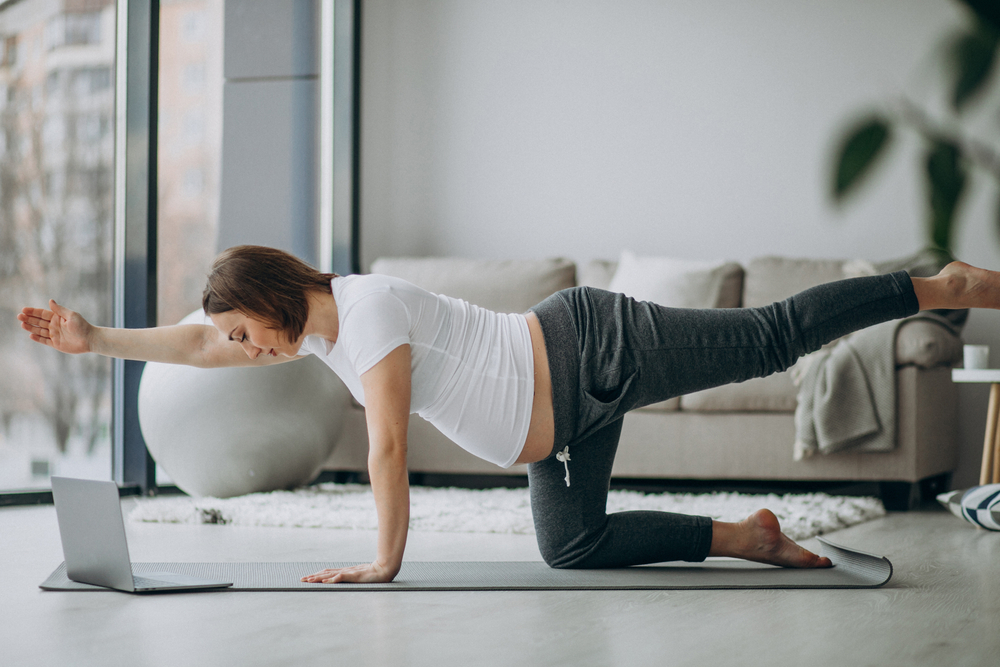 Yoga is not only safe during pregnancy but offers multiple health benefits. An approach focused on breathing, mindfulness, and stretching, prenatal yoga increases endurance, flexibility, and strength and helps relieve stress and anxiety.
Yoga is not only safe during pregnancy but offers multiple health benefits. An approach focused on breathing, mindfulness, and stretching, prenatal yoga increases endurance, flexibility, and strength and helps relieve stress and anxiety.
Yoga postures help strengthen the abdominal core, hip, and floor muscles, thus preparing the body for labor and delivery. Maintaining muscle strength also helps you to carry the extra weight and get back in shape after giving birth.
Deep yogic breathing also helps the body relax, loosen, and give birth with no or minimal pain medication. When you are afraid, stressed, or anxious, your muscles tighten and become tense which can make the contractions more painful. There are different ways to ease your fear of childbirth, like choosing a birth environment and caregiver you know but you can also try yoga and breathing techniques that can help you remain calm and present in labor.
If you have little experience with yoga and are looking for ways to strengthen your body and stretch your muscles, you can join a prenatal yoga class to learn the basics. You may want to observe a class first to ensure the environment, instructor’s style and the postures and activities involved feel right. And if you need some quality relaxation and me-time before your bundle of joy arrives, a yoga retreat might be just what you need.
Welcoming expectant moms at any stage in their pregnancy, yoga retreats offer a plethora of activities to relax, recharge, and prepare for birth. From yoga sessions and wellness and prenatal consultations to aromatherapy and spa pampering sessions, joining a yoga retreat is a wonderful way to indulge in some self-care, leaving you feeling ready for the next big chapter of life.
Yoga Retreats for Expecting Mothers
For an overseas babymoon, Malaysia, Australia, and Bali are all good destinations to get your relaxation fix. If you feel like staying close to home, you will still find plenty of yoga retreats where you can relax and recharge before your newest addition arrives.
For a truly idyllic retreat in tranquil greenery, for example, Thor is where zen-seeking women escape to relax, bring mind and body into harmony, and prepare for their next big chapter.
In addition to guided meditation and yoga practice, the programs include educational workshops, herbal medicine consultations, 1:1 strength training, forest bathing, reiki, and spa treatments.
Benefits of Yoga for Pregnant Women
Here are a few of the physical and mental benefits yoga offers pregnant women
Correct Breathing
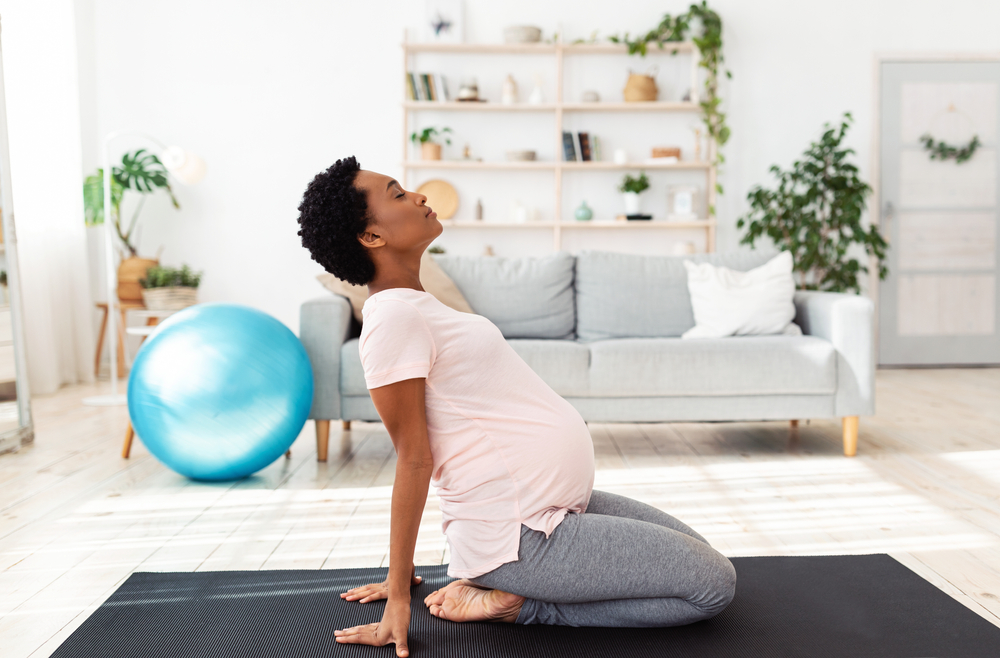 Because of the position of the fetus and the size of the womb, the lungs don’t have enough space to expand, causing shortness of breath. Breathing deeply and slowly enables the lungs to work more efficiently, helping you to ease breathlessness during pregnancy. Deep breathing also brings more oxygen to the baby and helps you relax during labor and better cope with contractions and pain.
Because of the position of the fetus and the size of the womb, the lungs don’t have enough space to expand, causing shortness of breath. Breathing deeply and slowly enables the lungs to work more efficiently, helping you to ease breathlessness during pregnancy. Deep breathing also brings more oxygen to the baby and helps you relax during labor and better cope with contractions and pain.
Strong Muscles
 Moving your body into different postures and stretching keeps your pelvic floor muscles in good condition. Regular practice helps increase endurance, strength, and flexibility, facilitating a smooth birth.
Moving your body into different postures and stretching keeps your pelvic floor muscles in good condition. Regular practice helps increase endurance, strength, and flexibility, facilitating a smooth birth.
Research also shows that practicing yoga during pregnancy shortens delivery, eases labor pain, and reduces the rate of Cesarean births. Increasing the flexibility and strength of the perineal and vaginal muscles facilitates natural delivery and reduces the risk of premature labor.
Pain Reduction
 Yoga for pregnant women has been shown to improve tolerance for pain during labor, thus increasing maternal comfort. In addition to labor-related pain, yoga helps reduce pelvic and lower back pain during the third trimester.
Yoga for pregnant women has been shown to improve tolerance for pain during labor, thus increasing maternal comfort. In addition to labor-related pain, yoga helps reduce pelvic and lower back pain during the third trimester.
A recent study confirms that women practicing yoga experience lower levels of pelvic pain, suggesting a combination of prenatal yoga and regular exercise for pain relief.
Reduced Anxiety and Better Sleep
 Practicing deep breathing and yoga activates the parasympathetic nervous system, improving sleep quality and calming the mind. Women attending prenatal yoga classes have been found to sleep longer at night, and their α-amylase levels decreased, suggesting reduced stress.
Practicing deep breathing and yoga activates the parasympathetic nervous system, improving sleep quality and calming the mind. Women attending prenatal yoga classes have been found to sleep longer at night, and their α-amylase levels decreased, suggesting reduced stress.
As well as relieving stress, studies show that yoga for pregnant women significantly decreases anxiety and depression and can be used as an effective and safe treatment for women with symptoms of depression.
Self-knowledge
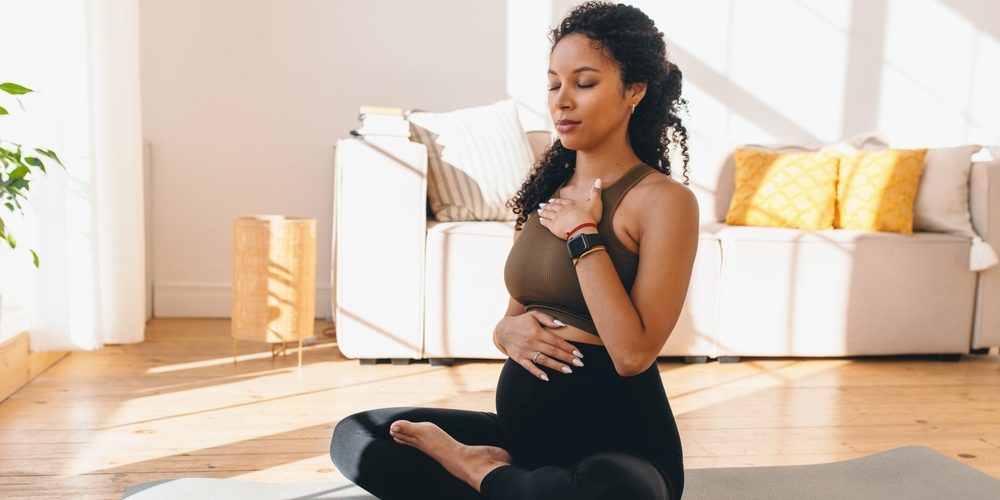 Yoga helps improve self-awareness by encouraging practitioners to stay present and focus on their sensations and feelings. Mindful meditation creates a space for your feelings and thoughts to rise, be felt and experienced, and let them go.
Yoga helps improve self-awareness by encouraging practitioners to stay present and focus on their sensations and feelings. Mindful meditation creates a space for your feelings and thoughts to rise, be felt and experienced, and let them go.
By encouraging you to look within, fully experience your emotions, and become comfortable with them, yoga helps you to understand yourself better without self-criticism or judgment.
Strengthening the Bond with Your Baby
 Yoga allows you to slow down and relax and tune out distractions and into your body and mind. Practicing the sequence of postures, breathing, and meditation allows you to focus on how your body changes and what is happening to your baby. As meditation and mindfulness calm and clear the mind, they create a mental space to bond with your baby on a deeper level.
Yoga allows you to slow down and relax and tune out distractions and into your body and mind. Practicing the sequence of postures, breathing, and meditation allows you to focus on how your body changes and what is happening to your baby. As meditation and mindfulness calm and clear the mind, they create a mental space to bond with your baby on a deeper level.
Resources to Help You with Your Pregnancy Workout
Here is the list of the best pregnancy apps for your comfort. And in this YouTube channel you will find help with navigating yoga poses for pregnant women:
Wrapping Up
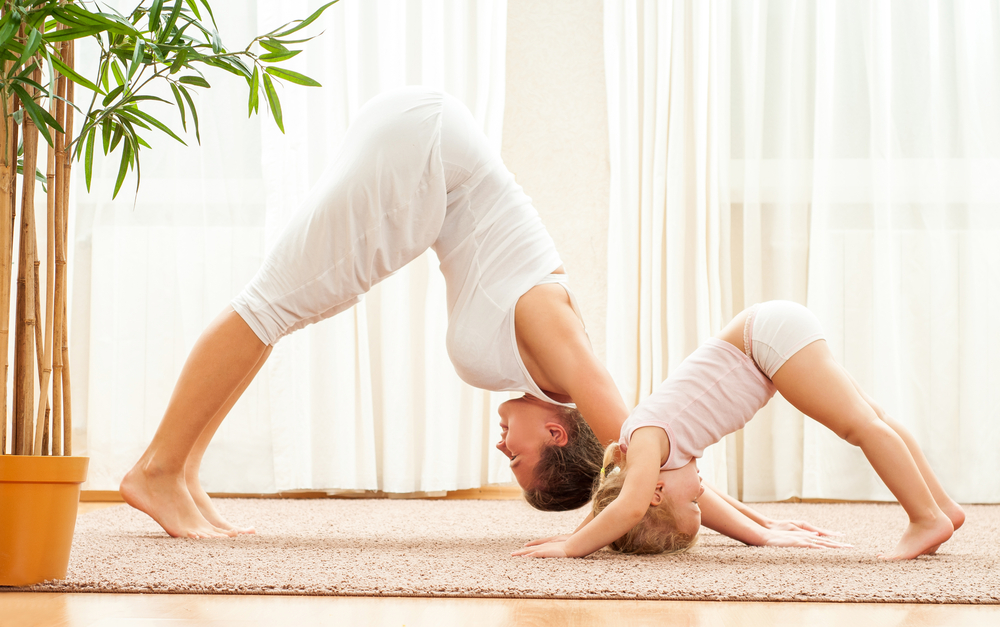 Exercising during pregnancy can benefit your health in several ways, including physically, mentally, and emotionally. Regular pregnancy exercise improves your flexibility and strength, promotes a healthy weight, improves your energy and mood, and reduces the risk of gestational diabetes, preterm delivery, and Cesarean birth.
Exercising during pregnancy can benefit your health in several ways, including physically, mentally, and emotionally. Regular pregnancy exercise improves your flexibility and strength, promotes a healthy weight, improves your energy and mood, and reduces the risk of gestational diabetes, preterm delivery, and Cesarean birth.
Exercising during pregnancy is not only beneficial but safe unless there are health-related reasons to refrain and as long as you avoid sports that carry a risk of falling and injury. Aqua aerobics, Pilates, breathing exercises, and yoga are generally safe and good for you and your baby.
Prenatal yoga, in particular, is safe for mothers-to-be and supports a healthy and strong pregnancy. With benefits like improved stamina and flexibility, pain relief, and reduced anxiety and depression, yoga helps pregnant women embrace their bodies and stay positive, calm, strong, and healthy.
DISCLAIMER: Always consult with a healthcare professional before starting any new routines, programs, or nutrition plans to ensure you receive the best medical advice and strategy for your specific individual needs.


 By Team THOR
By Team THOR